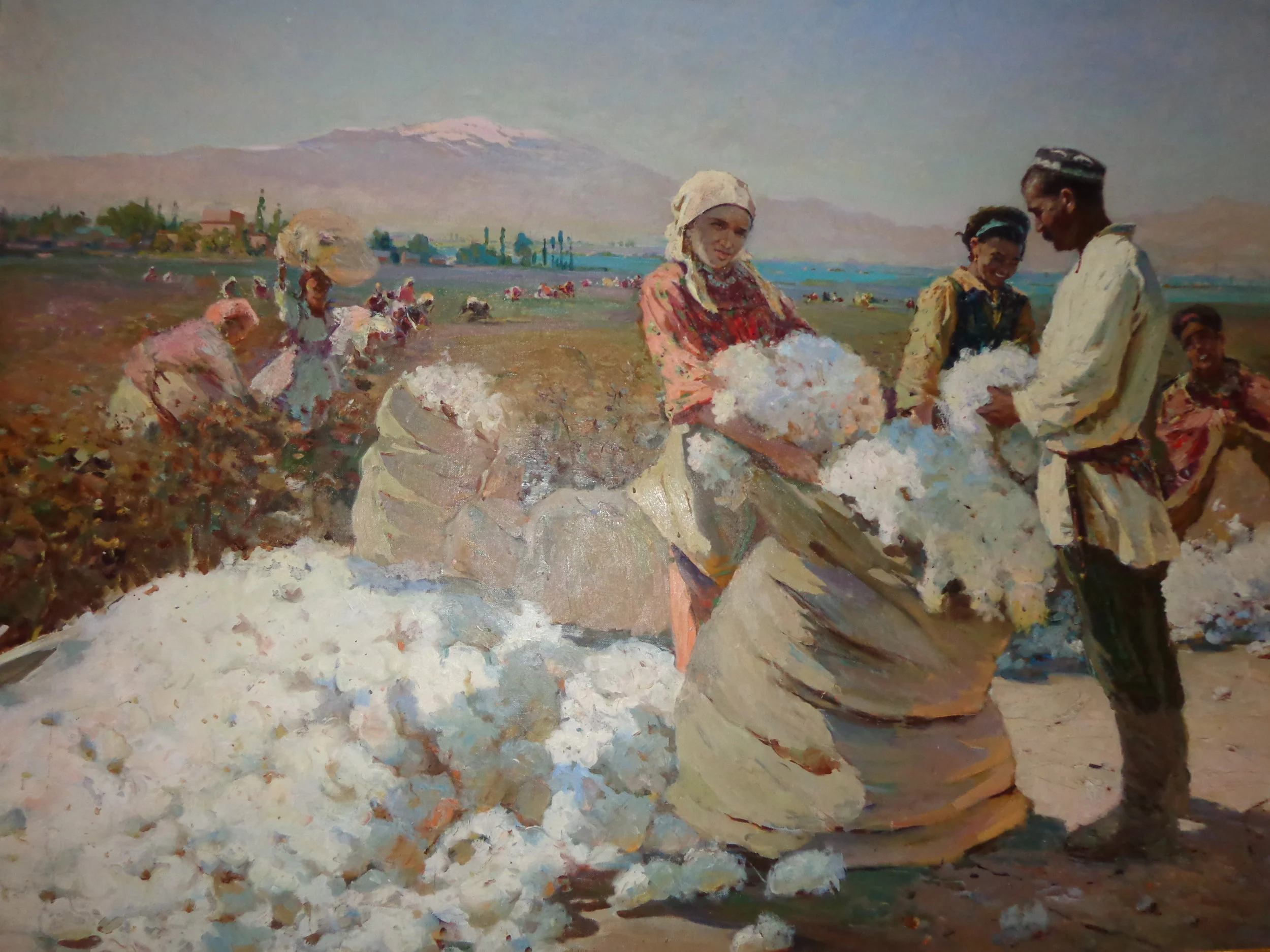Inside Arbob Palace
We are still at the Arbob Palace and will now take a peek inside the palace. The palace contains a glorious entry hall, a large and fancy auditorium that seats about 700, historical photos lauding collective workers and assorted hero award winners. There are over 100 rooms with some devoted to cotton production, wheat production, cattle breeding, and so on. There is also lots of soviet paintings and propaganda posters, especially happy, productive collective farm workers.
Rather than show some of the major rooms, I’ll give some hints about the content of the smaller rooms which were much more interesting to me.
You can see a small portion of a hand-painted ceiling in the first photo above. Much like the St. Petersburg Winter Palace, much of the building was done beautifully like this ceiling.
Many sculptures were in the palace such as the one in the second photo. It’s a nomad or shepherd herding his sheep on horseback. Tajiks had a big horse culture as well.
This painting in the cotton room in the third photo is a good example of what we saw. Central Asia was the soviet cotton producer. The people in the painting sure do look happy about their work.
The fourth photo shows several things. First, it has quite a nice vase, somewhat reminiscent of the Winter Palace. Behind the vase to the left on the wall is a painting of Urukhojaev, the leader of this collective farm and builder of this palace. You can see that his dress was Tajik and not soviet. This is in his office that to this day is supposed to be much as it was in his day.
The last photo is also in his office. This is his actual desk. Behind the desk is the palace as originally constructed. On his desk is a blotter with an outline of the Kremlin. And if you wonder how on earth a soviet satellite collective farm leader could manage to get the funding and build a palace like this, look at his desk again. He has two phones, a black one and a red one. His red one was a direct line to the Kremlin leadership. Urukhojaev had the Tajik pride and courage to defy the soviet dress code. I expect that he was a larger-than-life character. I also expect that his collective farm was incredibly productive and stood out amongst the soviet’s collective farms.





